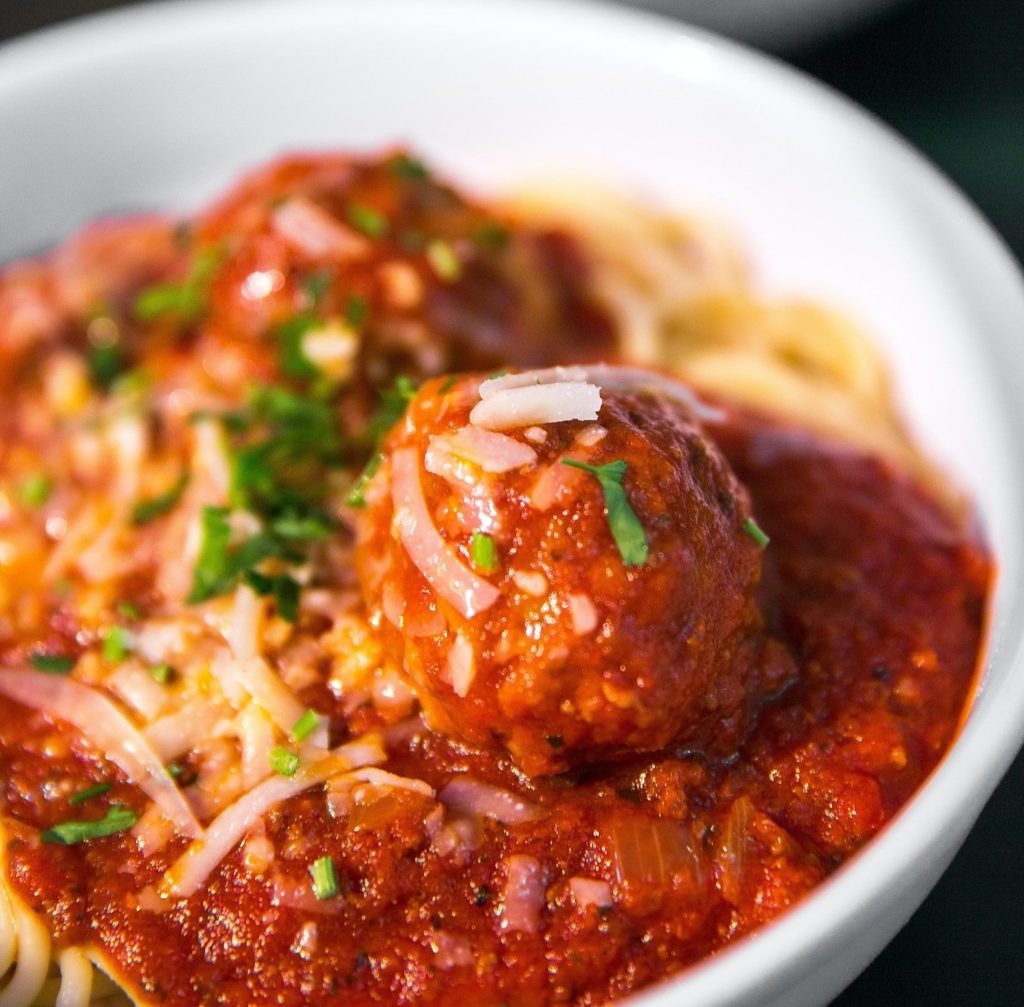Chewy red wines are known for their rich and full-bodied nature. They offer a unique tasting experience due to their specific characteristics.
What Makes Chewy Red Wine Unique? Tannin

Discover the Richness and Body
When you hear someone describe a wine as “chewy”, they are almost always talking about a red wine and almost always describing the wine’s tannins.
Tannins: Think of tannins as the wine’s natural structure. They give the wine that gripping sensation in your mouth and play a significant role in its texture. Chewy red wines often have noticeable tannins, which contribute to their satisfying and robust feel.
Helpful Tip: Here’s a 30-second tasting tip on how to tease out tannins.
Explore the Flavor Profile
You’ll also taste other flavors in addition to feeling the tannins in your red wine. Look for any of these elements:
- Dark Fruits: Picture yourself savoring blackberries, cherries, and plums. Chewy red wines are known for their dark fruit notes, which add depth and a touch of sweetness to the taste.
- Earthy Notes: These wines can also surprise your palate with hints of earthiness, evoking thoughts of soil, leather, and sometimes even mushrooms. It’s a bit like taking a walk through a forest in a glass.
- Spices: If you’re a fan of spices, you’re in for a treat. Chewy red wines often come with spicy undertones, from a hint of pepper to a dash of cinnamon, making each sip an adventure for your taste buds.
Feel the Mouthful Experience
- Viscosity: When we talk about the viscosity of wine, we’re referring to how thick or thin it feels in your mouth. Chewy red wines tend to be on the thicker side, coating your palate with their fullness.
- Texture: The texture of these wines can be incredibly smooth, velvety, or even slightly grainy. It’s a tactile experience that wine enthusiasts cherish. The texture goes back to tannins in red wine. Some grapes have smoother, silkier textures, like Merlot and Pinot Noir, other grapes are naturally chewy.
Grape Varieties for Chewy Red Wines
Now that you know what to expect from chewy red wines, let’s explore some of the grape varieties that give birth to these flavorful gems.
Meet the Stars
- Cabernet Sauvignon: Cabernet Sauvignon is renowned for its boldness. It often forms the backbone of many chewy red wines, offering intense flavors and a powerful presence.
- Syrah/Shiraz: Syrah and Shiraz grapes produce wines with deep, rich flavors that are beloved by many. They add a dash of intrigue to the world of chewy reds, along with some black peppercorn.
- Cabernet Franc: A touch of elegance is what Cabernet Franc brings to the table. With its more subtle character, it can be the secret ingredient that elevates a chewy red wine.
- Petite Sirah: Don’t let the “petite” in its name fool you; Petite Sirah yields dark and powerful wines, perfect for those who crave intensity.
- Carignan: Carignan tends to have a gripper texture, and therefore chewy nature, especially in younger vines. Wines made from older vineyards will have a softer nature to them. Don’t we all get softer in our old age?
- Nebbiolo: Nebbiolo is the name of the grape used to make Barolo wines, some of the most tannic wines from Italy.
- Baga: Baga is a famed grape of tannic proportions from Portugal. You’ll need to go to a specialty wine shop to find Baga wine, but if you love big red wines, it’s worth the trip.
Where to Find Chewy Red Wines
Chewy red wines are crafted in various wine regions around the world, each with its unique charm. Let’s explore a few of them:
Discover Wine Regions
- Bordeaux, France: Bordeaux is the classic home of chewy reds. Here, you’ll find a long history of wine-making expertise, resulting in wines known for their balance and depth.
- Napa Valley, California: Napa Valley is synonymous with bold and rich wines. The region’s warm climate and fertile soils produce wines that are full of character.
- Loire Valley, France: Loire Valley is famous for its Cabernet Franc wines, which offer a rich and inviting experience. Look for red wines from Chinon AOC, and you’ll be enjoying Cabernet Franc.
- Barossa Valley, Australia: Barossa Valley is renowned for its Shiraz wines. These Australian reds are often packed with dark fruit flavors and a hint of spice. Cooler climate Shiraz wines tend to be a bit chewier than their warmer climate counterparts. You can always ask a retail clerk for help if you’re unsure.
- Rhône Valley, France: Known for both power and finesse, the wines of the Rhône Valley provide a wide range of experiences for those looking to explore chewy reds that showcase Carignan.
Pairing Chewy Red Wines with Food

One of the joys of chewy red wines is pairing them with food. The wine’s tannins help cut through fat and protein. Salty foods will mellow out the wine. Chewy red wines really need to be enjoyed with something to eat.
Here are a few ideas to get you started:
Find the Perfect Match
- Red Meats: Chewy red wines love to accompany dishes like steaks, burgers, and roasts. The tannins in the wine cut through the richness of the meat, creating a delightful balance.
- Grilled Dishes: If you’re firing up the BBQ, you’re in for a treat. Grilled meats and chewy red wines go hand in hand, making your outdoor gatherings even more enjoyable.
- Aged Cheeses: The combination of chewy red wines with aged cheeses, such as cheddar or gouda, is a match made in culinary heaven. The wine’s flavors complement the cheese beautifully.
Aging Potential of Chewy Red Wines

Chewy red wines have great aging potential, and understanding how to cellar them can enhance your wine experience.
Cellaring and the Evolution of Flavor
The rule of thumb for aging chewy red wines is typically several years. As they mature, their flavor profiles can change, becoming smoother and more complex. Tannins act as a natural preservative. Over time, the tannins will mellow out and soften, becoming silkier in your mouth. But until that happens, your wine will keep. Neat!
Serving and Enjoying Chewy Red Wines
Now that you have your favorite chewy red in hand, it’s time to enjoy it to the fullest.
Serving Tips
- Ideal Temperature: Chewy red wines are best served slightly below room temperature, around 60-65°F (15-18°C), to bring out their full flavor potential.
- Decanting and Serving: Decanting these wines, especially if they’re young, can help them open up and breathe. Allow them to sit in a decanter for about 30 minutes before serving.
- The Right Glassware: Choose a glass with a wide bowl to allow the wine to breathe and for you to fully enjoy its aromas.
Describing Chewy Red Wines
When it comes to talking about what you’re tasting in a chewy red wine, you don’t need to be a wine expert. Here are some simple ways to describe your experience:
How to Talk About What You Taste
- “This wine feels so chalky and grippy on my tongue.”
- “I’m getting rich flavors of blackberries and a hint of cinnamon.”
- “There’s a lovely earthy note, like a walk in the forest, in this wine.”
Buying Chewy Red Wines
You’re all set to explore chewy red wines, but where can you find them?
Where and How to Get Them
- Price Ranges: Chewy red wines come in various price ranges, so there’s something for every budget. You can find quality options without breaking the bank.
- Seeking Recommendations: Don’t hesitate to ask for recommendations from experts or experienced friends. They can point you in the direction of wines that match your preferences. Ask for a cool-climate example of the wine you want to taste. These will often be more tannic and chewier as a result.
- Local Wine Shops and Online Options: Whether you prefer to browse the shelves of a local wine shop or order online, you’ll find a wide selection of chewy red wines waiting for you.
Final Thoughts
Chewy red wines have a place on every table and in every glass. If you’re not expecting them, they can surprise you. But when paired well, they create a memorable experience. You don’t need to be a wine connoisseur to appreciate and enjoy these wines. So, go ahead and explore, savor, and share the joy of chewy red wines with friends and family.
Thirsty for More?
- Check out: Wine and Food Pairing: A Comprehensive Guide
- Discover: Popular Wine Regions and their Signature Wine Styles
- What’s the Opposite of Chewy Red Wines? Light Red Wines, of course!



